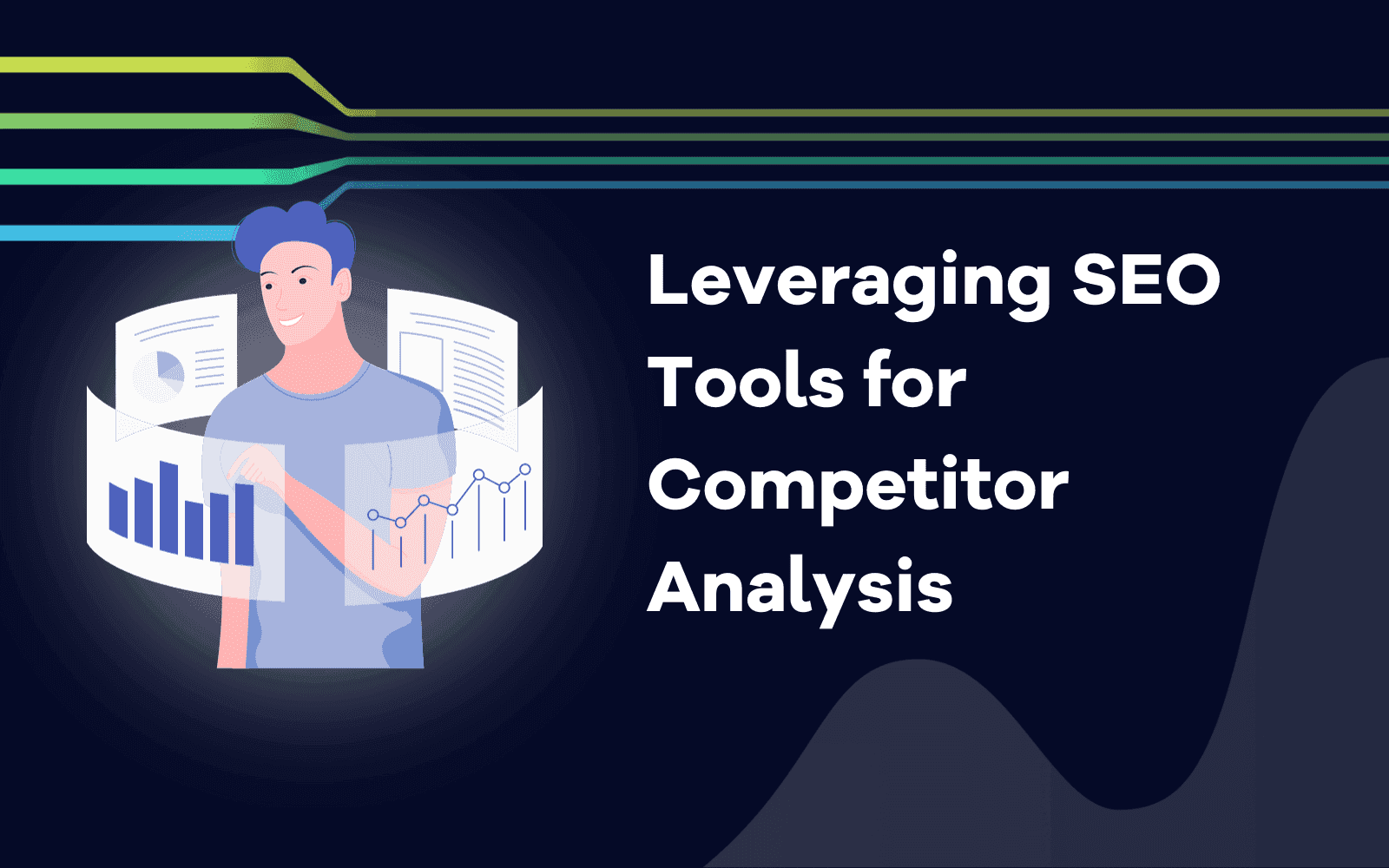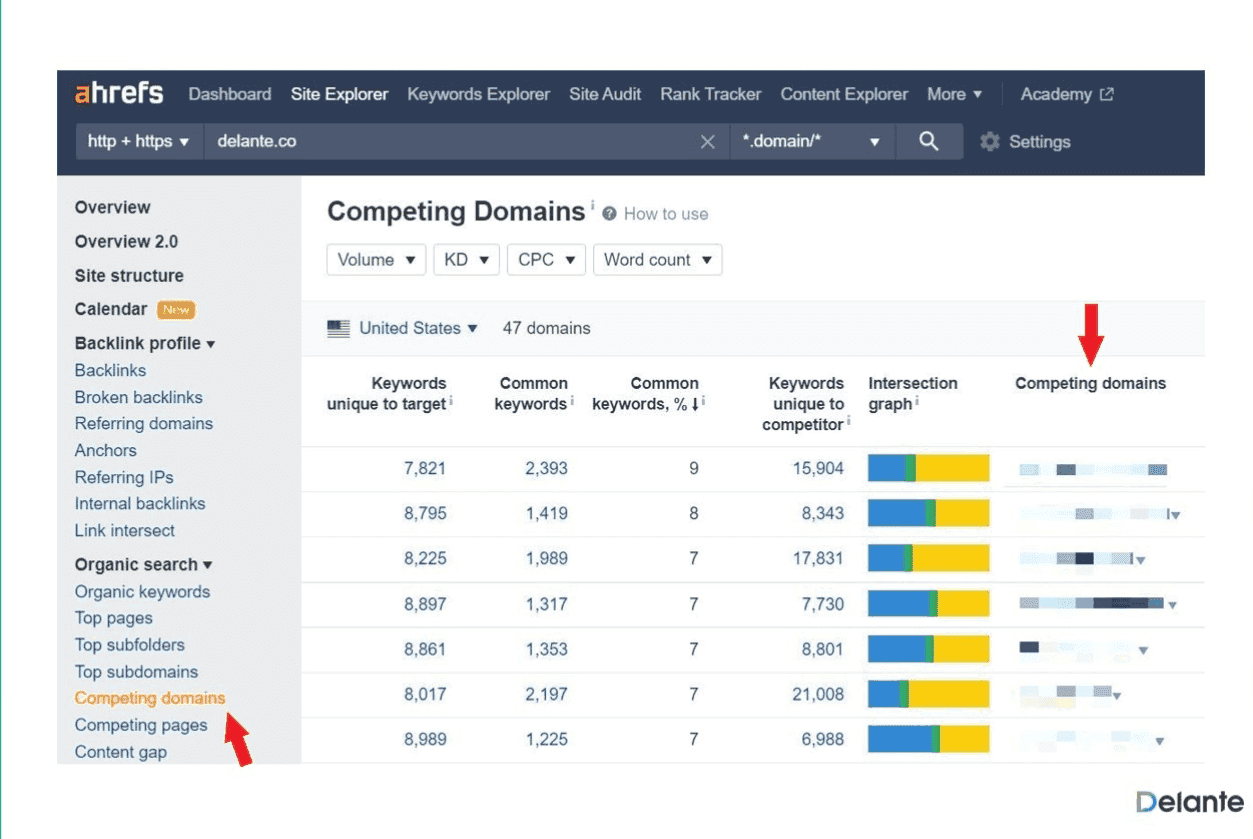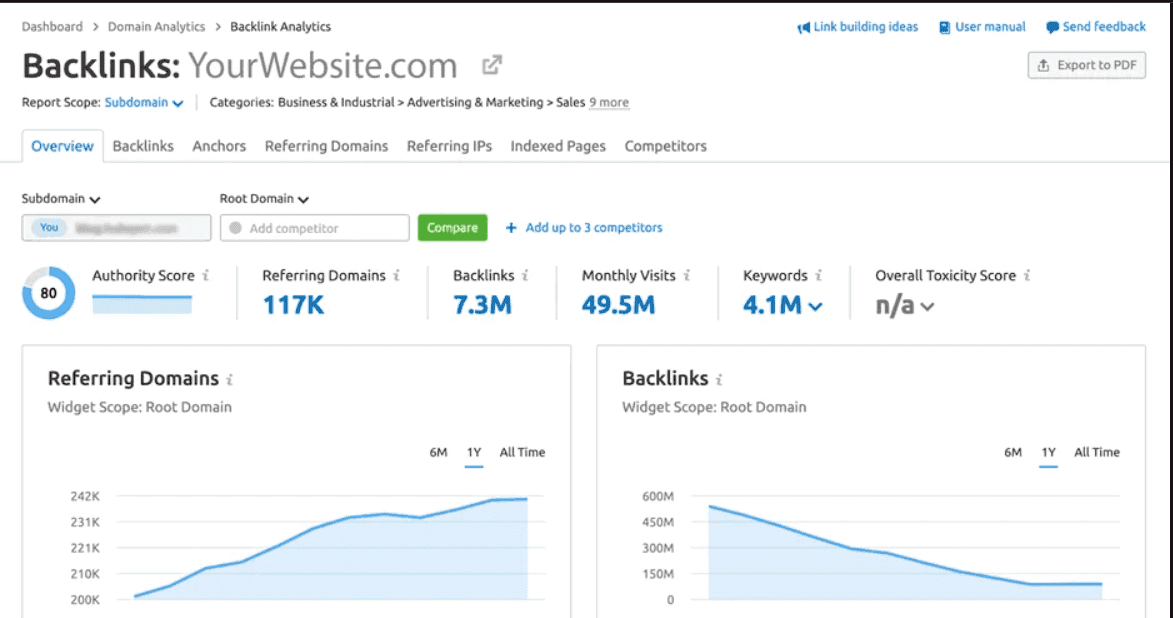Leveraging SEO Tools for Competitor Analysis: A Comprehensive Guide
Last updated on Monday, October 30, 2023

The key to a successful online presence is not just about optimizing your website but also about understanding your competitors. Competition is crucial with technological advancement these days. This is where SEO tools for competitor analysis come into play.
In this article, we will explore how to use SEO tools for competitor analysis and explore how you can leverage SEO tools to gain a competitive edge.
Understanding the Significance of Competitor Analysis
Competitor analysis is like a compass that guides your SEO strategy. It allows you to navigate the intricate SEO landscape effectively. It is part of strategic planning and market research for businesses.
This method includes evaluating and understanding your competitors' different strengths and weaknesses. In this way, you can make informed decisions and, in turn, gain a competitive edge over the others. Let's dive deeper into how it achieves this:
Identify Your Competitors
The first step in conducting a competitor analysis is to identify your competitors. Such would entail thorough market research, and you can begin by examining businesses that offer similar products or services to your target audience. Searching online, utilizing industry directories, and attending industry events to discover potential rivals are just some ways of doing competitor analysis.
SEO tools such as Accuranker, Semrush, and Ahrefs can help you compile a list of your primary competitors. These tools provide data on websites ranking for similar keywords or sharing your target audience.
Continuous monitoring and adjustment of your competitor list as the market evolves is also necessary for effective competitive analysis, and this helps to keep you ahead and adapt your strategies as needed.

Source:Delante
Uncover Their Strategies
Once you've identified your competitors, the next step is to uncover their strategies. SEO tools provide insights into their keywords, backlinks, content, and more. These tools can help you assess the on-page SEO factors of your competitors, from the meta titles, meta descriptions, and keyword usage that they use.
Knowing this can help you optimize your website better. Some SEO tools also give you an insight into your competitors’ social media activity and engagement, which then gives you a glimpse into what kind of content resonates best with their target audience.
Scenario: Imagine you run an online pet supply store, and you discover that a competitor is ranking well for the keyword "organic dog food." SEO tools allow you to see the specific keywords they are targeting within this category, giving you valuable insights into their strategy. Compare your findings with your SEO performance to create benchmarks and identify improvement areas.
Spot Opportunities and Threats
By analyzing your competitors, you can identify opportunities they may have missed and potential threats to your rankings. SEO tools can provide a wealth of data to help you pinpoint these opportunities and threats.
Scenario: Consider a situation where you run a blog about digital marketing. Through competitor analysis, you notice that a rival blog has recently gained high-quality backlinks by publishing guest posts on reputable industry websites. This insight prompts you to start your guest posting campaign, leveraging similar opportunities.
Evaluate Content Gaps
One of the key benefits of competitor analysis is identifying content gaps in your strategy. By examining the content your competitors are producing and the topics they cover, you can discover areas where your website may be lacking. Such allows you to create new content that fills these gaps and provides value to your audience.
Scenario: If you run a fitness blog and find that your competitors are regularly publishing workout routines but not addressing nutrition in-depth, this presents an opportunity for you to create comprehensive nutrition guides and recipes to cater to a broader audience.
Assess Backlink Profiles
Backlinks play a crucial role in SEO, and competitor analysis can help you assess the quality and quantity of your competitors' backlinks. By analyzing their backlink profiles, you can identify potential link-building opportunities and strategies to acquire high-quality backlinks for your website.
Scenario: If you discover a competitor has secured backlinks from authoritative websites in your industry, you can explore outreach and relationship-building tactics to acquire similar backlinks, enhancing your website authority and search engine rankings.

Monitor Social Media and Online Reputation
Competitor analysis extends beyond SEO data, including social media presence and online reputation management. Monitoring your competitors' social media activities, customer engagement and brand sentiment can provide insights into what resonates with your shared target audience. This information can guide your own social media strategy and reputation management efforts.
Scenario: If a competitor effectively uses social media to engage with their audience and receives positive feedback, consider ramping up your social media efforts, responding to customer inquiries promptly, and addressing any negative feedback professionally.
Adapt and Innovate
Competitor analysis is an ongoing process. As your competitors evolve and adapt their strategies, staying informed and continuously adjusting your SEO strategy are important. By closely monitoring your competitors, you can identify emerging trends, new technologies, and shifts in consumer behavior that may impact your SEO efforts.
Scenario: If a competitor starts utilizing voice search optimization techniques, you can research and implement similar strategies to ensure your website remains competitive in voice search results.
Measure and Benchmark Progress
Regularly measuring your SEO performance against competitors allows you to track your progress and identify areas where you excel or need improvement. Use key performance indicators (KPIs) to measure your website's performance compared to your competitors and adjust your strategies based on these insights.
Scenario: If your competitor's website experiences a significant increase in organic traffic after implementing a particular SEO tactic, you can set a benchmark and work toward achieving similar results through your strategy.
Leveraging SEO Tools for Competitor Analysis
Let’s delve deeper into how you can harness the power of SEO tools for effective competitor analysis in greater detail, with practical examples and scenarios.
Keyword Analysis
Keyword research is the foundation of any SEO strategy. SEO tools like Accuranker, Ahrefs, SEMrush, and Moz can help you discover the keywords your competitors are ranking for.
Scenario: Suppose you own a fitness blog and want to target the keyword "best home workout equipment." By using SEO tools, you discover that your main competitor is ranking for this keyword. You can now analyze their content and keyword usage to create even better content that surpasses theirs.
Backlink Analysis
Backlinks are a crucial ranking factor. SEO tools can help you identify the websites linking to your competitors.
Scenario: You operate a local bakery and want to improve your online presence. You use SEO tools to find that a nearby bakery gets quality backlinks from local food bloggers. You can then reach out to these bloggers, offering them a free tasting session in exchange for a review, thus gaining valuable backlinks.
Content Gap Analysis
One of the most valuable insights you can gain from SEO tools is identifying content gaps.
Scenario: If you discover a competitor ranks well for keywords like "online social work degrees." You can explore content strategies and SEO techniques to compete in the social work education niche, targeting keywords relevant to social work degrees online to expand your reach and relevance to your target audience.
On-Page Analysis
Analyze your competitors' on-page SEO elements such as title tags, meta descriptions, and header tags.
Scenario: If you run a tech review blog, competitor analysis reveals that your rival consistently uses compelling meta descriptions. You can learn from this and craft more engaging article meta descriptions to improve click-through rates.
Performance Tracking
SEO tools allow you to track your competitors' performance over time.
Scenario: Let's say you own a small online clothing store. You monitor a competitor who is slowly gaining traction in your niche. Through consistent tracking, you notice a decline in their rankings and traffic. Such presents an opportunity to seize the market share they are losing.

Examples of Successful Competitor Analysis
To further illustrate the power of competitor analysis, let's explore additional examples and scenarios:
Example 1: Company A vs. Company B
Scenario: Company A noticed that Company B consistently ranked higher for key industry-related keywords. They discovered that Company B had a robust content strategy through competitor analysis. Company A decided to invest in content creation, resulting in improved rankings and increased organic traffic.
Example 2: E-commerce Store Optimization
Scenario: An e-commerce store analyzed a competitor's product pages and found that they included detailed product descriptions and customer reviews. They saw a significant increase in conversion rates and sales by implementing a similar strategy.
Conclusion and Takeaways
Leveraging SEO tools for competitor analysis is not just an option but a necessity. Understanding competitors' strategies can identify opportunities, mitigate threats, and improve your SEO efforts.
In the ever-evolving world of SEO, staying ahead of the competition requires continuous analysis and adaptation. Start leveraging SEO tools for competitor analysis today, and watch your online presence soar above the competition.

Article by:
Aditya
Head of content at Clearinfo
Aditya is the head of content at Clearinfo and is responsible for improving the site's organic visibility. He is a certified SEO trainer and has worked with SaaS companies and startups to enhance their digital marketing presence.


